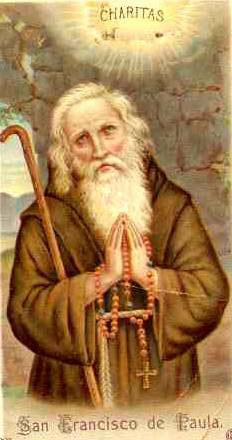We ask you, urgently: don't scroll past this
Dear readers, Catholic Online was de-platformed by Shopify for our pro-life beliefs. They shut down our Catholic Online, Catholic Online School, Prayer Candles, and Catholic Online Learning Resources essential faith tools serving over 1.4 million students and millions of families worldwide. Our founders, now in their 70's, just gave their entire life savings to protect this mission. But fewer than 2% of readers donate. If everyone gave just $5, the cost of a coffee, we could rebuild stronger and keep Catholic education free for all. Stand with us in faith. Thank you.Help Now >
Epiphanius of Constantinople
FREE Catholic Classes
Died 535. Epiphanius succeeded John II (518-20) as Patriarch of Constantinople. It was the time of the reaction against Monophysitism in the Eastern Empire that followed the accession of Justin I (518-27). Justin was Catholic ; he let the Henoticon (482) of his predecessor Zeno (474-91) quietly drop, and very soon after his accession he caused a synod of forty bishops to meet under John II at the capital, in order to proclaim a general acceptance of the decrees of Chalcedon throughout the empire, the restoration of Catholic, and the deposition of Monophysite bishops (P.G., LXXXVI, I, 785). The same synod reopened negotiations with the Roman See after the schism of Acacius (484-519). The reigning pope was Hormisdas (514-23), and it was on this occasion that he composed his famous formula. On Easter Day, 24 March, 519, the reunion was proclaimed. Severus of Antioch and the other Monophysite leaders fled to Egypt. The papal legates remained at Constantinople till 520. In that year the Patriarch John died, and Epiphanius was elected as his successor. He was then given authority from the pope to reconcile all schismatics and Monophysites who retracted their errors and signed the formula. Epiphanius signed it himself in the first place ( Mansi, VIII, 502 sqq.).
Four letters from Epiphanius to Hormisdas are extant, with the pope's letters to him (P.L., LXIII). In the first, from Hormisdas to Epiphanius (col. 493), the pope complains that he has received as yet no letter and no legate to announce the patriarch's accession. In the second letter (l.c.) the pope requires that three repentant Monophysite bishops, Elias, Thomas, and Nicostratus, should be restored to their sees, and he appoints Epiphanius to restore them. Epiphanius then writes to Hormisdas (col. 494-95) to announce his succession to the See of Constantinople, as the pope had demanded. He excuses himself for his delay by explaining the difficult circumstances and the disorder that still remain since the Monophysite troubles, and protests his exceeding desire for communion with the Roman See : "It is my special prayer, most blessed Father, to be united to you and to embrace the Divine dogmas which were left by the holy Apostles especially to the holy See of Peter, chief of the Apostles ; for I count nothing more precious than them" (l.c.). He then draws up a very orthodox profession of faith according to the decrees of Ephesus and Chalcedon; he accepts all the dogmatic letters of St. Leo I, and declares that he will never name in his diptychs anyone who is condemned by the pope. His second letter (col. 497-99) to Hormisdas praises the emperor's zeal for the Faith, explains the case of many bishops in Pontus, Asia, and the (civil) "diocese" of the East, whom Epiphanius wishes to receive back into communion now that they have renounced Monophysitism, and mentions a jewelled chalice and other gifts he sends to the pope (this letter is dated 520). Hormisdas answers (col. 505-6), exhorting the patriarch to persevere in reconciling Monophysites and thanking him for his presents. Epiphanius' third letter relates that a number of Eastern bishops have petitioned the emperor for union with Rome (col. 506-7), and the fourth (col. 507) praises Paulinus, whom the pope had sent to Constantinople as his legate. Migne (P.G., LXXXVI, Pt. I, 783-86) gives the text of the condemnation of Severus and Peter of Antioch, made by a synod of Constantinople held under Epiphanius. Assemani (Bibl. Orient., I, 619) gives a list of forty-five canons drawn up by this same synod. Epiphanius was succeeded by Anthimus I.
Join the Movement
When you sign up below, you don't just join an email list - you're joining an entire movement for Free world class Catholic education.

-

- Stations of the Cross
- Easter / Lent
- 5 Lenten Prayers
- Ash Wednesday
- Living Lent
- 7 Morning Prayers
- Mysteries of the Rosary
- Litany of the Bl. Virgin Mary
- Popular Saints
- Popular Prayers
- Female Saints
- Saint Feast Days by Month
- Pray the Rosary
Pope Francis’ April Prayer Intention: Using Technology to Strengthen Human Connections
Finding Peace Through Prayer in a World of Worry
Trump Administration Withholds Federal Grants from Planned Parenthood Over DEI and Civil Rights Concerns
Daily Catholic
 Daily Readings for Wednesday, April 02, 2025
Daily Readings for Wednesday, April 02, 2025 St. Francis of Paola: Saint of the Day for Wednesday, April 02, 2025
St. Francis of Paola: Saint of the Day for Wednesday, April 02, 2025 Prayer for God's Help in Daily Actions: Prayer of the Day for Friday, March 14, 2025
Prayer for God's Help in Daily Actions: Prayer of the Day for Friday, March 14, 2025 Daily Readings for Tuesday, April 01, 2025
Daily Readings for Tuesday, April 01, 2025 St. Hugh of Grenoble: Saint of the Day for Tuesday, April 01, 2025
St. Hugh of Grenoble: Saint of the Day for Tuesday, April 01, 2025- To Perceive Animals as God's Gifts: Prayer of the Day for Thursday, March 13, 2025
![]()
Copyright 2025 Catholic Online. All materials contained on this site, whether written, audible or visual are the exclusive property of Catholic Online and are protected under U.S. and International copyright laws, © Copyright 2025 Catholic Online. Any unauthorized use, without prior written consent of Catholic Online is strictly forbidden and prohibited.
Catholic Online is a Project of Your Catholic Voice Foundation, a Not-for-Profit Corporation. Your Catholic Voice Foundation has been granted a recognition of tax exemption under Section 501(c)(3) of the Internal Revenue Code. Federal Tax Identification Number: 81-0596847. Your gift is tax-deductible as allowed by law.


 Daily Readings for Wednesday, April 02, 2025
Daily Readings for Wednesday, April 02, 2025 St. Francis of Paola: Saint of the Day for Wednesday, April 02, 2025
St. Francis of Paola: Saint of the Day for Wednesday, April 02, 2025 Prayer for God's Help in Daily Actions: Prayer of the Day for Friday, March 14, 2025
Prayer for God's Help in Daily Actions: Prayer of the Day for Friday, March 14, 2025 St. Hugh of Grenoble: Saint of the Day for Tuesday, April 01, 2025
St. Hugh of Grenoble: Saint of the Day for Tuesday, April 01, 2025

